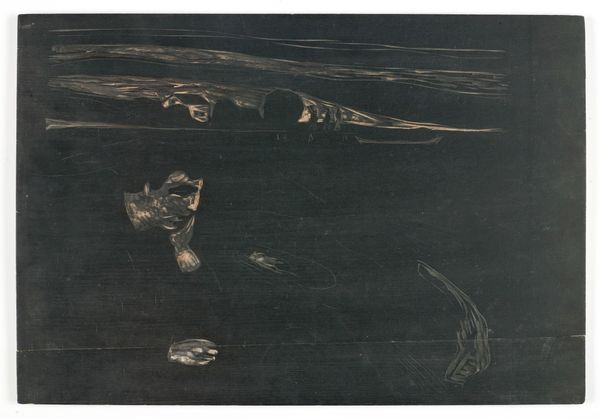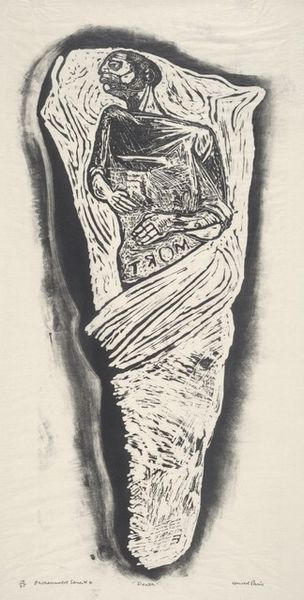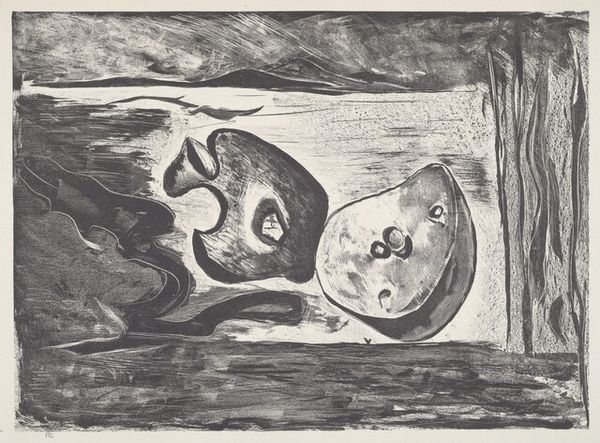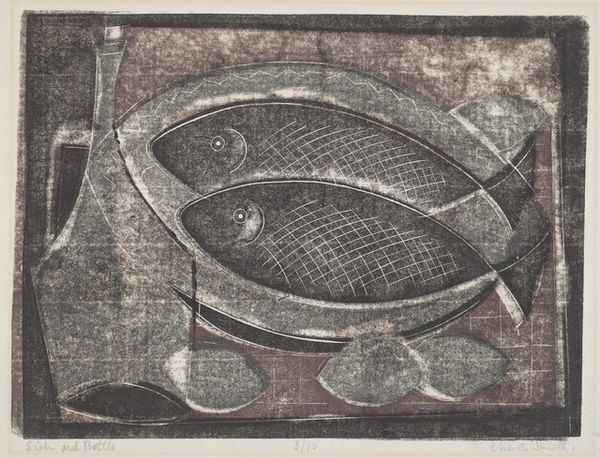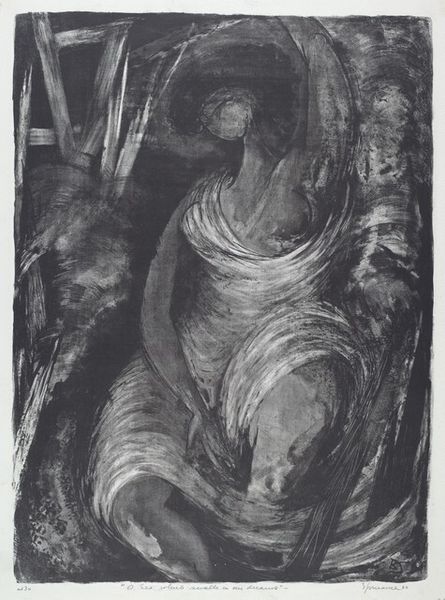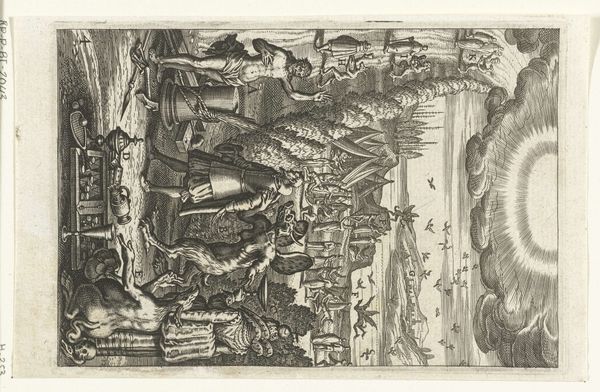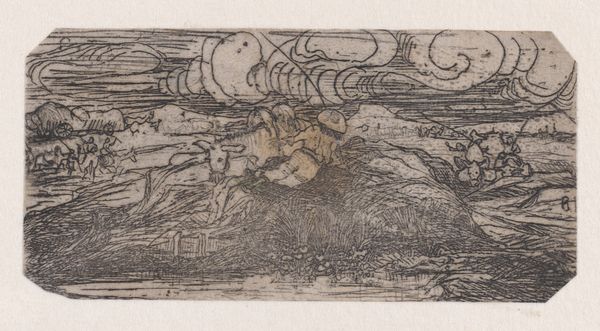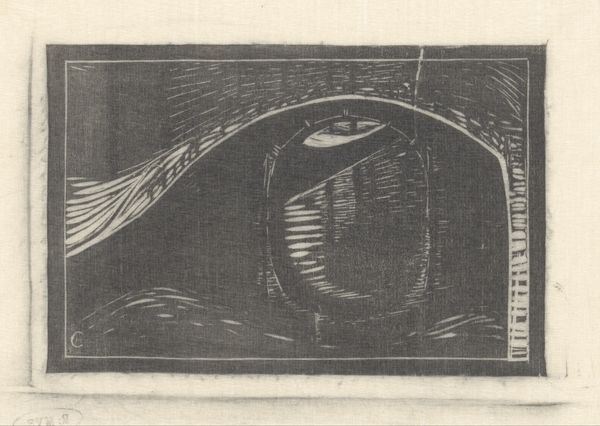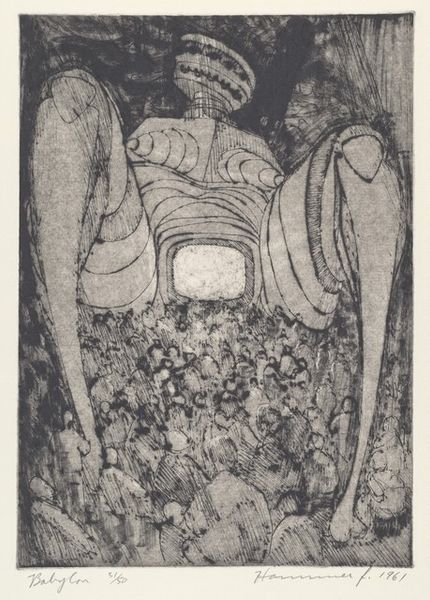
drawing, print, graphite
#
portrait
#
drawing
# print
#
graphite
#
realism
Dimensions: image: 43.82 × 64.77 cm (17 1/4 × 25 1/2 in.)
Copyright: National Gallery of Art: CC0 1.0
Curator: Ivan Albright created this drawing, or rather, print of a drawing, in 1954. It’s called “Show Case Doll” and what immediately strikes me is its somber tonality and detailed examination of, what looks like, an effigy. Editor: It certainly does exude a melancholic air. It almost looks like it’s emerging from shadows or floating above us. What do you think Albright intended with this near obsession over details and such careful lighting? Curator: Knowing Albright's body of work, which frequently explores themes of decay, mortality, and the corruption of the flesh, one could surmise this piece serves as a stark reminder of vanity's impermanence, right? We’re dealing with a representation of an idealized image displayed in a showcase but captured as though decaying, possibly to symbolize the inevitable deterioration that occurs despite all efforts to preserve or freeze beauty. Editor: So, almost an anti-doll then. A visual critique of idealised femininity presented within restrictive or suffocating societal expectations of beauty that trap women into a false vision. Did he see something particularly troubling about the commercialisation of femininity back then, do you think? Curator: It is hard to ignore that period. Albright witnessed seismic cultural changes— the increasing importance of image and the performativity required from women. Remember, realism was often used by social critics, examining societal hypocrisies and consumer culture. His focus perhaps mirrors his unease. Editor: I hadn't considered Albright's work in that specific socio-historical setting, so I'm grateful for this analysis. It pushes us to confront these historical constructions while highlighting art's role in reflecting, resisting, and reshaping conversations about womanhood. Curator: And that interplay, seeing how artistic expression and wider cultural anxieties intertwine, is, after all, why art history remains so important today, helping us reflect critically on the forces that shaped both our present and the legacies of past eras.
Comments
No comments
Be the first to comment and join the conversation on the ultimate creative platform.
